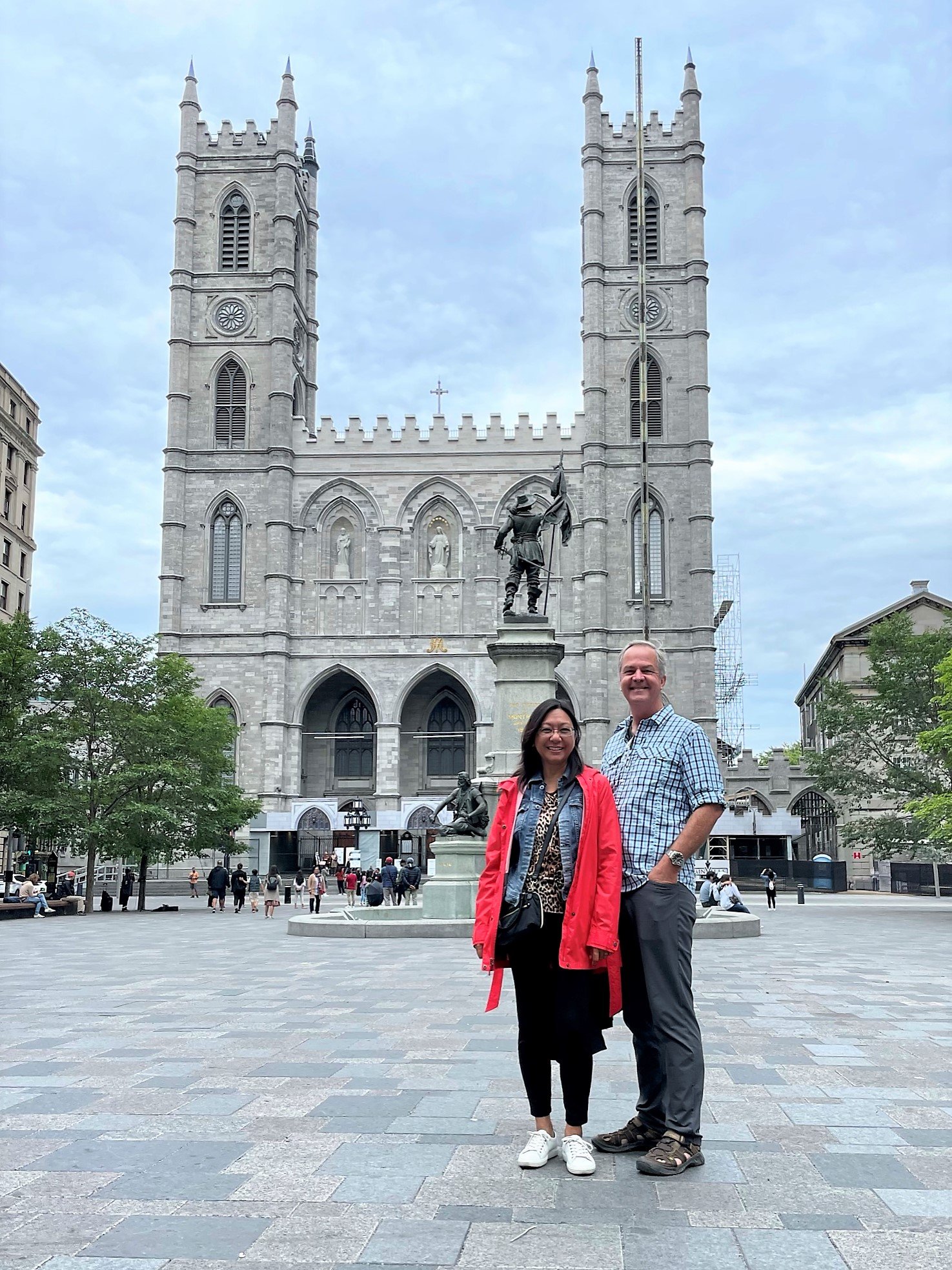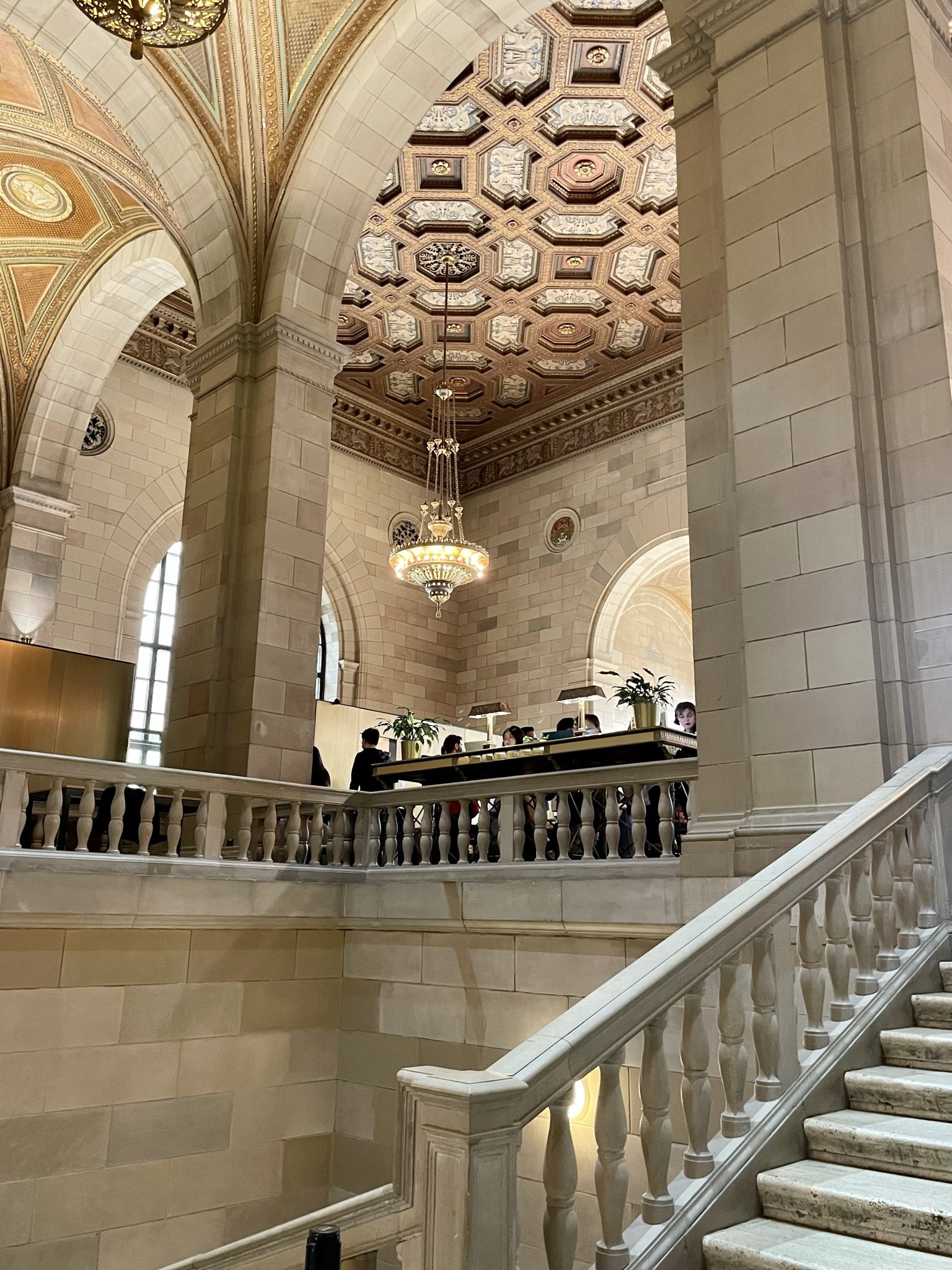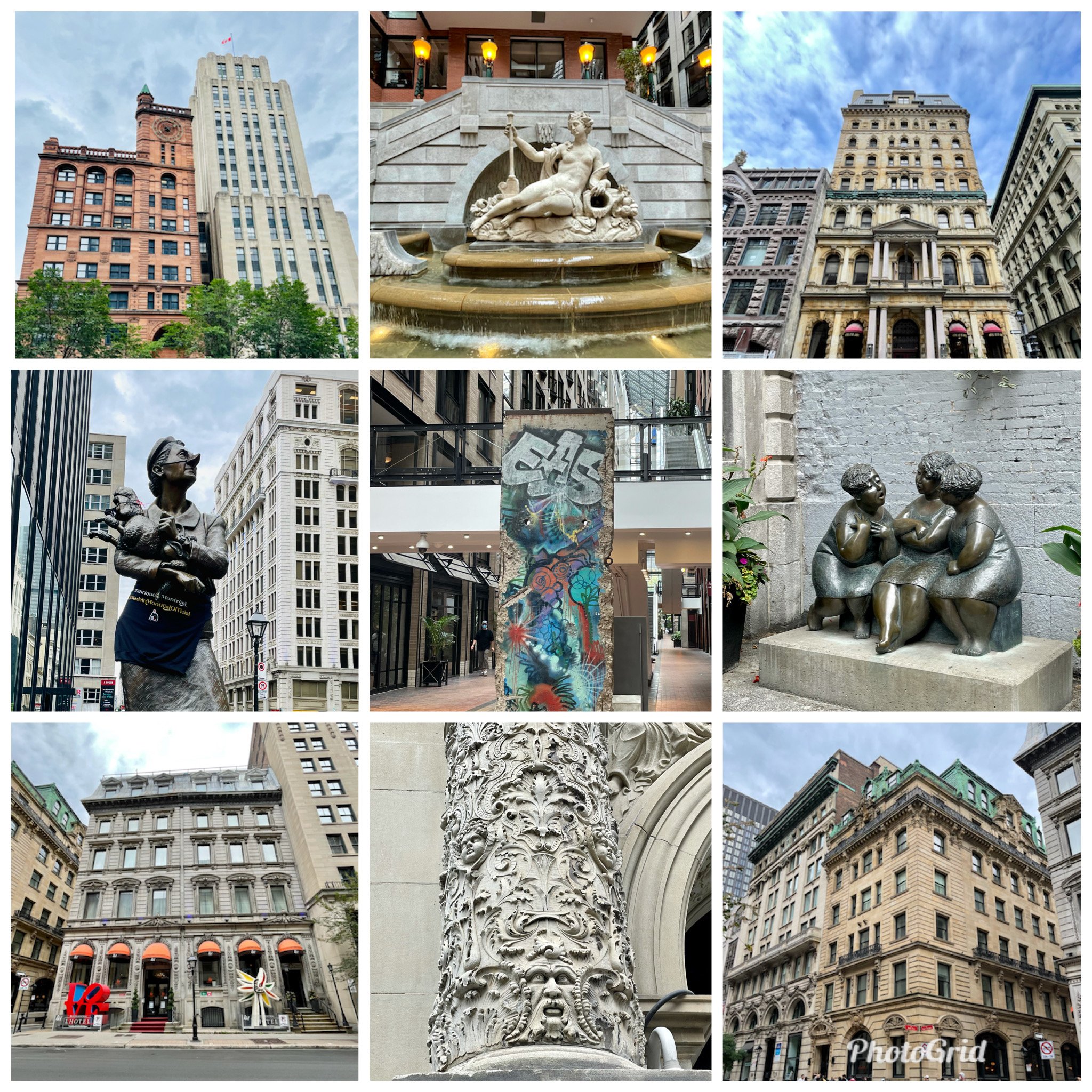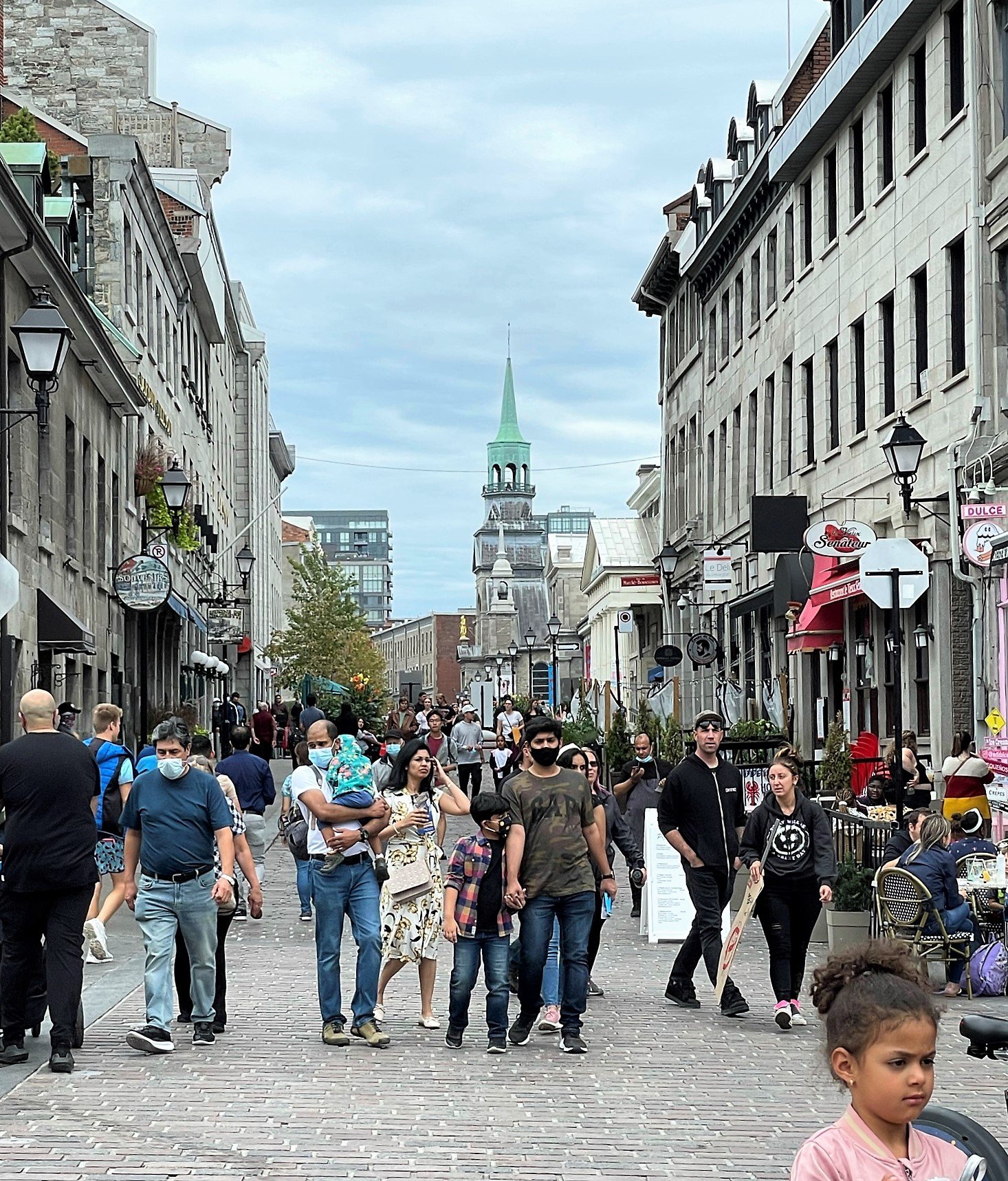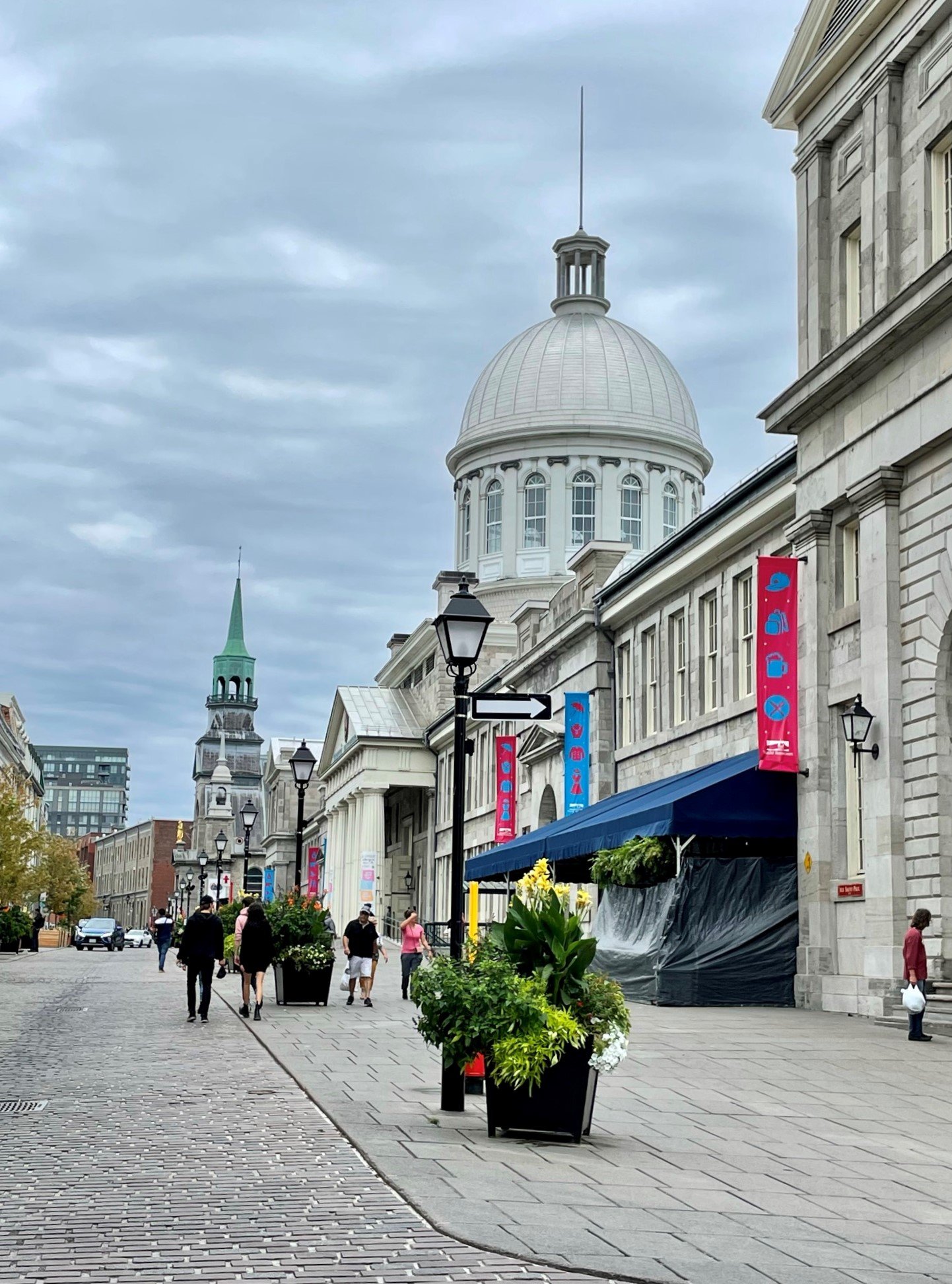Montréal, Québec Part I
As we drove east on the Trans Canada Highway, the road signs were in both English and French. But as we left Ontario and entered Québec province, the English disappeared. Neither of us speaks French, but we're pretty sure that Siri (female Irish voice) was mispronouncing the street names as she helped us navigate to our hotel in Montréal.
After a month in the sparsely populated wilderness of Montana, North Dakota, and Michigan's Upper Peninsula, it was thrilling to be in a metropolis. I was so excited that I was uncharacteristically wide awake at sunrise. My reward was this view from our hotel room.
It was the first time visiting Montréal for both of us. (I visited as a child but don't remember anything, so it doesn't count.) And since we had only one full day to explore the city, we took a guided tour of the Old Montréal historic district. We met our tour guide in front of the Notre-Dame Basilica.
Our guide was very happy to meet us. He had been unable to work for 15 months, and when tours finally resumed this summer, his clients were mainly folks from Toronto who liked to argue with him over which city - Toronto or Montréal - was better. I think he was relieved that we were Americans who were properly impressed with Montréal.
And it really was impressive. Old Montréal is like a time capsule for both French and English architecture. We learned that Montréal was founded in 1642 and became a thriving French colony; in 1763, it was surrendered to the British. The west side of the old town is dominated by commercial buildings and feels more British; the east side has the old city hall and mansions, and feels more French.
One of our favorite buildings on the west side was originally the Royal Bank of Canada. It is now a coffee shop called the Crew Collective, when it isn't being used to for a movie shoot. How cool is that?
Here are more favorite scenes from our walk around the western side of Old Montréal.
As we walked toward the east side of Old Montreal, the buildings grew shorter, and the streets were filled with cafe tables and pedestrians.
Soon we could see the distinctive dome of Bonsecours Market and the steeple of Notre-Dame-de-Bonsecours Chapel.
The Chapel of Our Lady of Good Help is also known as the Sailors' Church, and had boats hanging from the ceiling. There was also a small wooden statue of Our Lady that originally came from France and survived the fire that destroyed the original chapel in 1754.
Our guided tour ended up the hill from the chapel, near a tall pillar with a statue of Admiral Nelson (who, oddly enough, never visited Montréal). We were thankful for our good luck - the rain that had threatened all morning never came. With the whole afternoon ahead, we eagerly set out to explore Old Montréal on our own.

